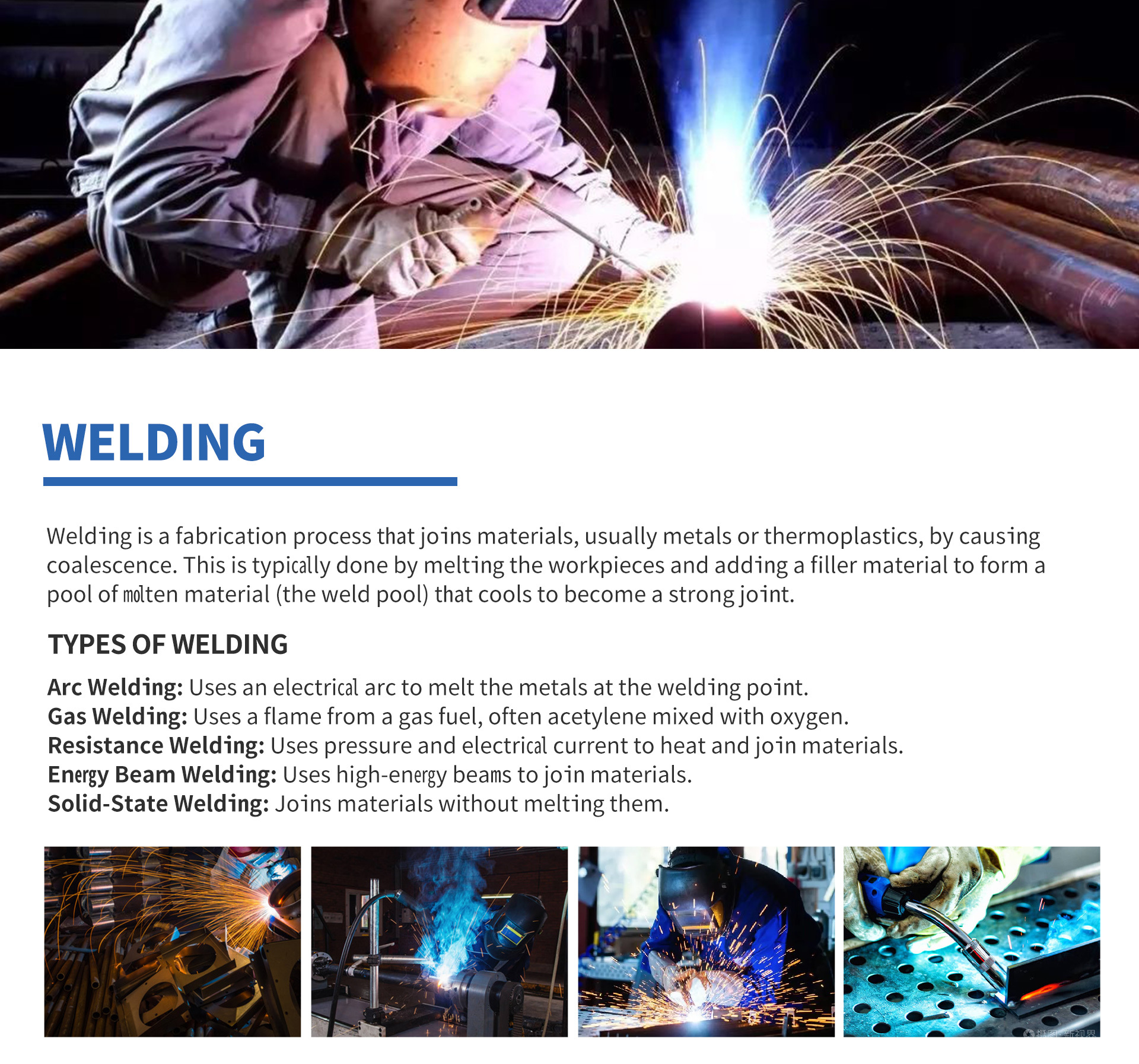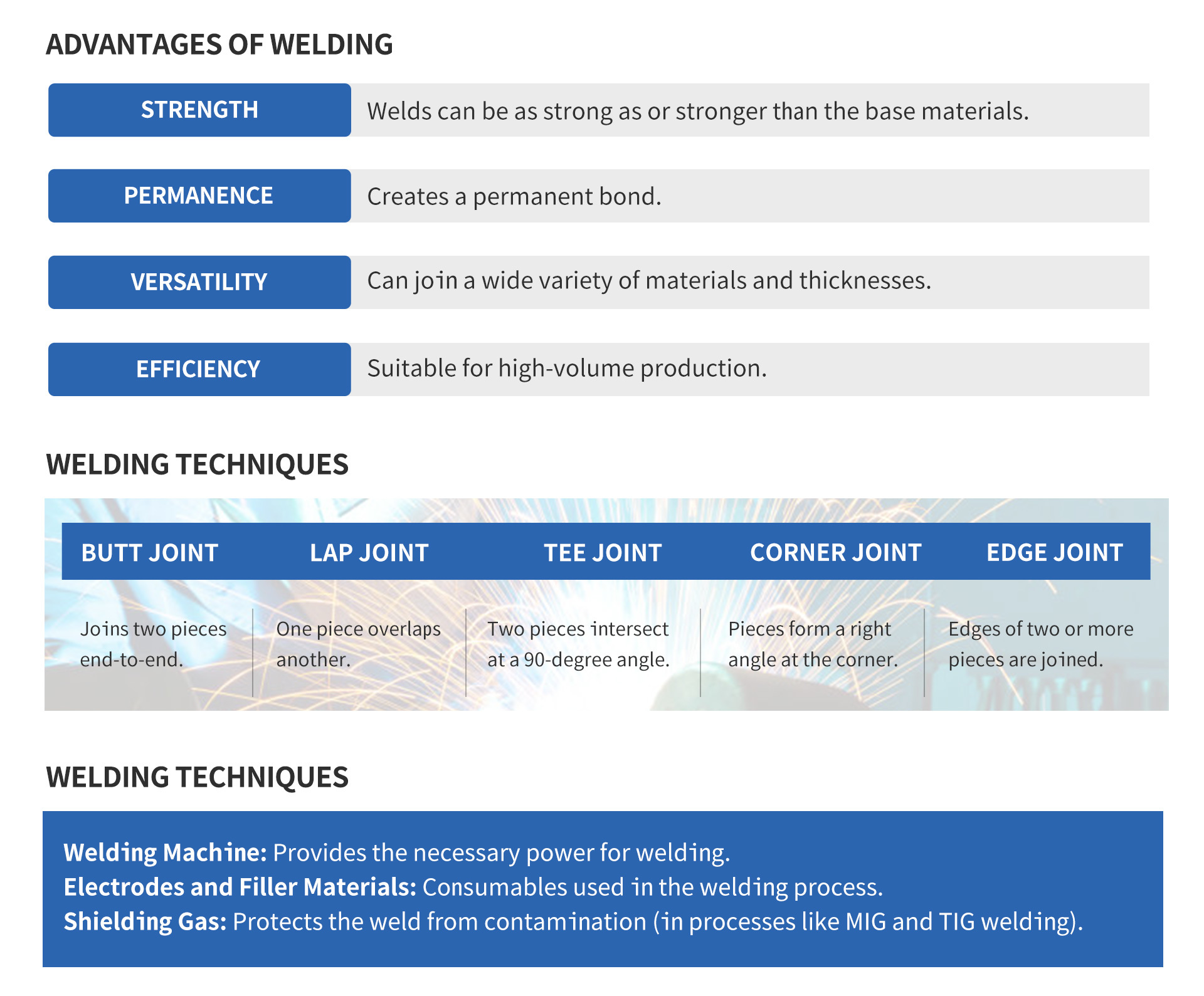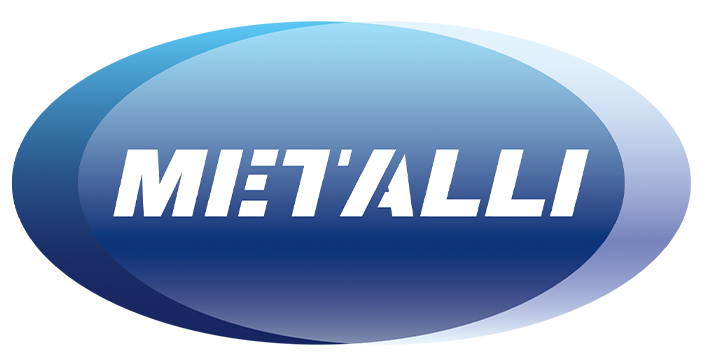PRODUCTS
Welding is a fabrication process that joins materials, usually metals or thermoplastics, by causing coalescence. This is typically done by melting the workpieces and adding a filler material to form a pool of molten material (the weld pool) that cools to become a strong joint.
Types of Welding
-
Arc Welding: Uses an electrical arc to melt the metals at the welding point.
- Shielded Metal Arc Welding (SMAW): Also known as stick welding, uses a consumable electrode coated in flux.
- Gas Metal Arc Welding (GMAW/MIG): Uses a continuously fed wire and an inert gas to shield the weld.
- Gas Tungsten Arc Welding (GTAW/TIG): Uses a non-consumable tungsten electrode and an inert gas shield.
- Flux-Cored Arc Welding (FCAW): Similar to MIG welding but uses a special tubular wire filled with flux.
-
Gas Welding: Uses a flame from a gas fuel, often acetylene mixed with oxygen.
- Oxy-Acetylene Welding (OAW): A type of gas welding that uses acetylene and oxygen to produce a flame hot enough to melt steel.
-
Resistance Welding: Uses pressure and electrical current to heat and join materials.
- Spot Welding: Commonly used for joining sheet metal.
- Seam Welding: Similar to spot welding but produces a continuous weld.
-
Energy Beam Welding: Uses high-energy beams to join materials.
- Laser Beam Welding (LBW): Uses a laser to melt the materials.
- Electron Beam Welding (EBW): Uses a beam of high-velocity electrons.
-
Solid-State Welding: Joins materials without melting them.
- Friction Welding (FRW): Uses frictional heat and pressure to join materials.
- Ultrasonic Welding (USW): Uses high-frequency ultrasonic acoustic vibrations to join materials.










